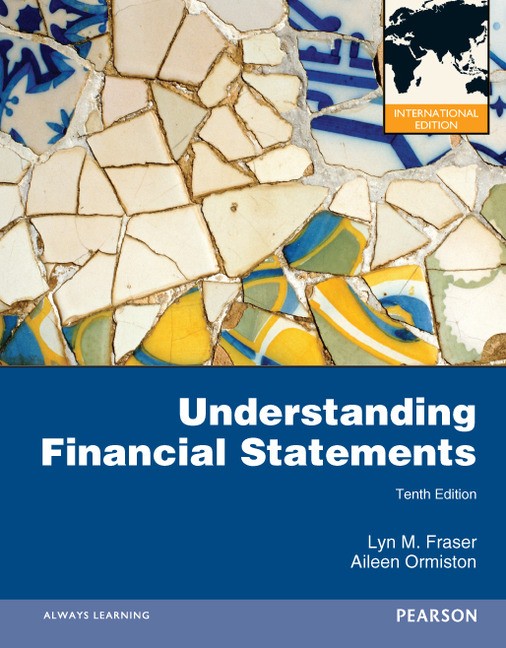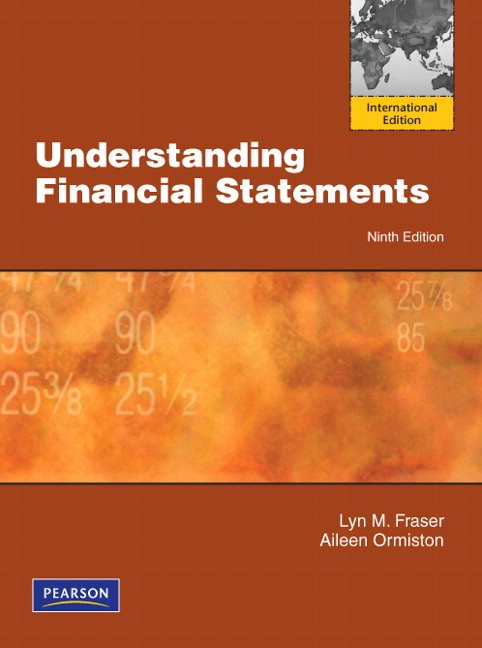Understanding Financial Statements
Post on: 16 Март, 2015 No Comment

Why We Have Financial Statements
Before we start our review of financial statements, it’s important to understand why they are put together in the first place. Management of any business requires a flow of information to make informed, intelligent decisions affecting the success or failure of its operations. Investors need statements to analyze investment potential Banks require financial statements to decide whether or not to loan money, and many companies need statements to ascertain the risk involved in doing business with their customers and suppliers.
Generally an accounting department, a bookkeeper or the owner of a business systematically records, sorts and summarizes the thousands of documents (register tapes, invoices and vouchers) representing the transactions of business. These transactions include: sale of merchandise; payroll distribution; material purchases for inventory — to mention just a few. These facts are then compiled, classified and summarized into financial reports for a business so that a financial statement can then be prepared.
Financial statements are customarily prepared on a quarterly, biannual or annual basis. The date of a financial statement is of considerable importance. Most are usually drawn up on a yearly (fiscal) basis. Statements provided that are outside of the fiscal closing are known as interim statements.
Bookkeeping and accounting principles treat any business as a separate entity apart form the owners or principals, purchase goods, sell products and pay salaries. This distinction of the business apart from the owners in important in understanding how financial statements are presented.
D&B maintains information on 12 million U.S. businesses in its information files. Over 99 percent of these concerns are privately held proprietorships, partnerships or corporations. A privately held business is usually run by a small number of principals who answer only to themselves. Publicly owned companies, on the other hand, are corporations run by management answering to an elected board of directors, numerous stockholders and regulators, and whose shares of stock (ownership) can be purchased by the public at large.
There are two parts to the financial statement — the balance sheet and the income (profit and loss) statement.
A balance sheet is a detailed snapshot of the condition or financial health of a company on a specific date. December 31st is the most popular choice among business, however many seasonal businesses issue their statements after their main selling season, because their condition is most favorable at that time. Balance sheets show the dollar amount of assets (what the business owns) and liabilities (what a business owes) in relation to net worth or owner’s equity (what the owner, principals or stockholders own). Balance sheets are presented with assets on the left side of a page and liabilities and equity on the right. Totals of both left and right sides must balance, since total assets must equal total liabilities plus net worth.
The income or profit and loss statement is a detailed computation of the money a business makes or loses over a specific time period. Sales or service income is offset against expenses-operating and production costs. You will most often see year-end statements reflecting income and expenses for a particular calendar year.
A shortcoming of reviewing a single financial statement of a business is the inability to establish important trends. However, when you compare two or more successive financial statements of the same concern, a trend becomes apparent. Individual items of the balance sheet and profit and loss statement compared with identical items on previous statements can be significantly reveling in decision making. This observation process is called comparative analysis, which we’ll use throughout this guide. Keep in mind, comparative analysis of a company’s financial statement to its previous results and to industry averages is essential in assessing its financial health.
Notes receivable represent a variety of obligations with terms coming due within a year. Notes receivable may be used by a company to secure payments from past-due accounts, or for merchandise sold on installment terms. In any case, notes receivable should be reviewed closely.
You will find that inventory includes different items depending on whether a business is a manufacturer, wholesaler or retailer. Retailers and wholesalers will show goods that are sold as is with o further processing or supplies required in shipping. On the other hand, many manufacturers will show three different classes of inventory: raw materials, work-in-process or progress and finished goods. Raw materials are considered the most valuable part of inventory as they could be resold in the event of liquidation. Work-in-process has the least value because it requires additional labor and a sales effort to get rid of it if liquidation should occur. Finished goods are ready for resale. Finished goods value vary greatly according to circumstances. If they are popular products in good condition that can be easily sold, then the value shown might be justified. If the goods are questionable in salability, the value may be carried too high. The manufacturer’s cost of labor employed in the production of finished goods and goods in process, as well as factory expenses is included in the value. Inventory is normally shown on the balance sheet at cost or market value, whichever is lower.
As a company’s sales volume increases, larger inventories are required; however, problems can arise in financing their purchases unless turnover (number of time a year goods are bought and sold) is kept in balance with sales. A sales decline could be accompanied by a decrease in inventory in order to maintain a healthy condition. If a business has a sizable inventory, it may have partially completed or finished goods that are obsolete, or it could reflect a change in merchandising conditions.
This category includes prepaid insurance, taxes rent and interest. Some conservative analysts consider prepaid items as noncurrent because they cannot be converted to cash to pay obligations quickly, and therefore have no value to creditors. Normally, this category is not large in relation to other balance sheet items, but if it is sizable there may be problems.
Noncurrent assets are items a business cannot easily turn into cash and are not consumed within business-cycle activity. We have defined current assets as those that can be converted into cash within one year. In the case of noncurrent assets, they are defined as assets that have a life exceeding a year.
Fixed assets are materials, goods, services and land used in the production of a company’s goods. Examples include: real estate, buildings, plant equipment, tools and machinery, furniture, fixtures, office or store equipment and transportation equipment. All of these would be used in producing products for a company’s customers. Land, equipment or buildings not used in the production of customer goods would be listed as other noncurrent assets or investments. Fixed assets are carried on the company’s accounting books at the price they cost at the time of purchase.

All fixed assets, except land, are regularly depreciated since they eventually wear out. Depreciation is an accounting practice that reduces the fixed asset’s carrying value on an annual basis. The reductions are considered a cost of doing business and are called a depreciation charge. Eventually the fixed asset will be reduced to its salvage or scrap value. Normally the accounting procedure is to list the fixed asset cost less accumulated depreciation, which would be shown on the statement or in a footnote. Bear in mind, not all companies can be comparable on this item as some rent their equipment and premises. If a business rents, its fixed asset total will be smaller compared with other balance sheet items.
Under the other assets category, several items can been lumped together. The following items may be itemized separately on other balance sheets, and if significant, should be closely examined: investments, intangible, and miscellaneous assets.
Investments of a business represent assets of a permanent nature that will yield benefits a year or more after the date of the financial statement. These may include: investments in related companies such as affiliates (partly owned) and subsidiaries (owned and controlled); stocks and bonds maturing later than one year; securities placed in special funds; and fixed assets not used in production. The value of these items should be shown at cost.
Miscellaneous assets include advances to and receivables from subsidiaries, and receivables from officers and employees.
Intangible assets are those that may have great value to an operating company but have limited value to creditors. Analysts tend to discount these items or value them very conservatively. Intangible assets may be: a company’s goodwill, copyrights and trademarks, development costs, patents, mailing lists and catalogs, treasury stock, formulas and processes, organization costs, and research and development costs.
Current liabilities are obligations that a business must pay within a year. Generally they are obligations that are due by a specific date, usually within 30 to 90 days of fulfillment. To maintain a good reputation and successful operations, most businesses find they must have sufficient funds available to pay these obligations on time.
Accounts payable represents merchandise or material requirements purchased on credit terms and not paid for by the balance sheet date. When reviewing balance sheets of small companies, you will frequently find that liabilities principally fall into the accounts payable line. Suppliers dealing in good faith expect their invoices to be paid according to the terms of sales specified. These can range from net 30 to 90 days (after invoice date) plus discount incentives of 1 percent or more if payments are made by a specified earlier time. Reasons for discount incentives were outlined in the accounts receivable section earlier in this guide.
Companies able to obtain bank loans frequently show small accounts payable relative to all of their current liabilities. The loans are often used to cover material and merchandising obligations. Sizable payables shown, when there are loans outstanding, may indicate special credit terms being extended by suppliers or poor timing of purchases.
If a business has borrowed from a bank without collateral, the bank loan would be considered unsecured (no collateral pledged) which is a favorable sign. It shows the business has an alternative credit source available other than suppliers, and the business meets the strict requirements of a bank. On the other hand, if collateral has been pledged, then the loan would be listed as secured (the bank has a claim on part or all of the borrower’s assets). Loan nonpayment can result in the bank satisfying its claim by taking possession of the secured asset and selling it. Some companies have a line of credit (a limit up to which it can borrow) as a bank customer, which is also a sign that it is regarded as a good risk. This line is used by companies frequently during peak selling seasons. However, if a company has a line, you would be wise to find out the amount to determine the bank’s evaluation of the company. Bank loans listed under current liabilities are to be retired within a year. Bank borrowing needs generally will increase along with the company’s growth.














